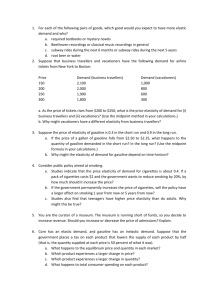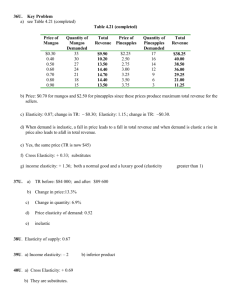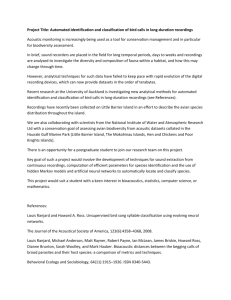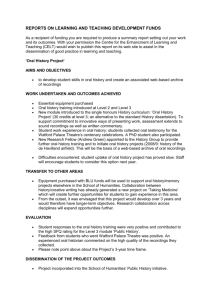chapter 5 solutions
advertisement
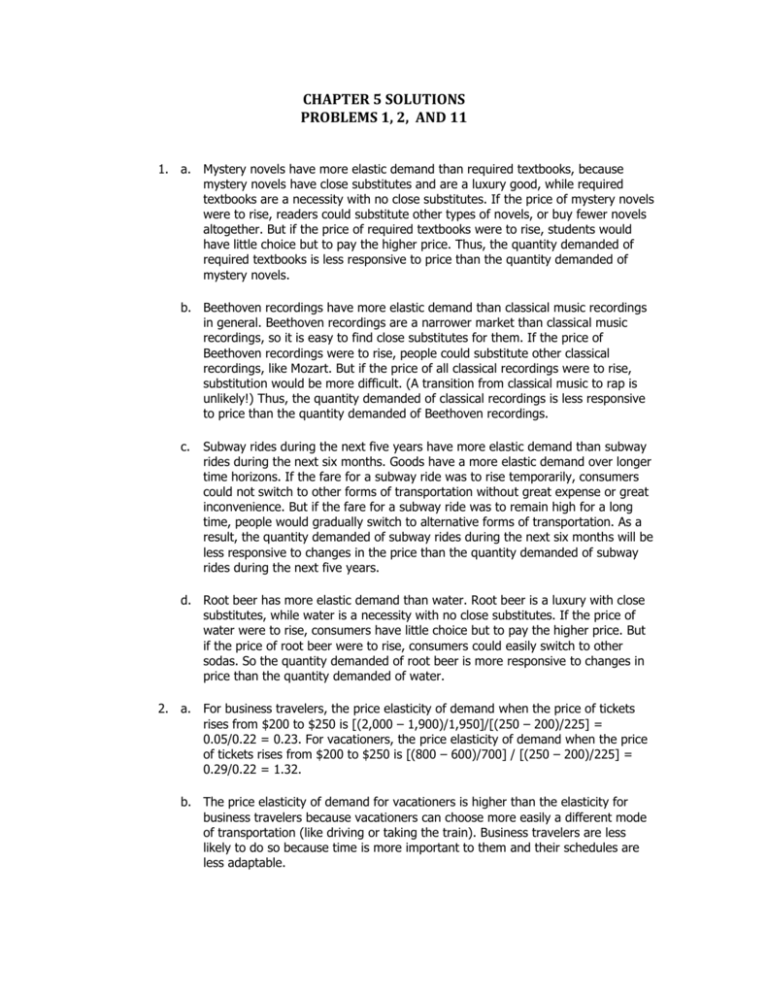
CHAPTER 5 SOLUTIONS PROBLEMS 1, 2, AND 11 1. a. Mystery novels have more elastic demand than required textbooks, because mystery novels have close substitutes and are a luxury good, while required textbooks are a necessity with no close substitutes. If the price of mystery novels were to rise, readers could substitute other types of novels, or buy fewer novels altogether. But if the price of required textbooks were to rise, students would have little choice but to pay the higher price. Thus, the quantity demanded of required textbooks is less responsive to price than the quantity demanded of mystery novels. b. Beethoven recordings have more elastic demand than classical music recordings in general. Beethoven recordings are a narrower market than classical music recordings, so it is easy to find close substitutes for them. If the price of Beethoven recordings were to rise, people could substitute other classical recordings, like Mozart. But if the price of all classical recordings were to rise, substitution would be more difficult. (A transition from classical music to rap is unlikely!) Thus, the quantity demanded of classical recordings is less responsive to price than the quantity demanded of Beethoven recordings. c. Subway rides during the next five years have more elastic demand than subway rides during the next six months. Goods have a more elastic demand over longer time horizons. If the fare for a subway ride was to rise temporarily, consumers could not switch to other forms of transportation without great expense or great inconvenience. But if the fare for a subway ride was to remain high for a long time, people would gradually switch to alternative forms of transportation. As a result, the quantity demanded of subway rides during the next six months will be less responsive to changes in the price than the quantity demanded of subway rides during the next five years. d. Root beer has more elastic demand than water. Root beer is a luxury with close substitutes, while water is a necessity with no close substitutes. If the price of water were to rise, consumers have little choice but to pay the higher price. But if the price of root beer were to rise, consumers could easily switch to other sodas. So the quantity demanded of root beer is more responsive to changes in price than the quantity demanded of water. 2. a. For business travelers, the price elasticity of demand when the price of tickets rises from $200 to $250 is [(2,000 – 1,900)/1,950]/[(250 – 200)/225] = 0.05/0.22 = 0.23. For vacationers, the price elasticity of demand when the price of tickets rises from $200 to $250 is [(800 – 600)/700] / [(250 – 200)/225] = 0.29/0.22 = 1.32. b. The price elasticity of demand for vacationers is higher than the elasticity for business travelers because vacationers can choose more easily a different mode of transportation (like driving or taking the train). Business travelers are less likely to do so because time is more important to them and their schedules are less adaptable. 11. a. With a price elasticity of demand of 0.4, reducing the quantity demanded of cigarettes by 20% requires a 50% increase in price, because 20/50 = 0.4. With the price of cigarettes currently $2, this would require an increase in the price to $3.33 a pack using the midpoint method (note that ($3.33 – $2)/$2.67 = .50). b. The policy will have a larger effect five years from now than it does one year from now. The elasticity is larger in the long run, because it may take some time for people to reduce their cigarette usage. The habit of smoking is hard to break in the short run. c. Because teenagers do not have as much income as adults, they are likely to have a higher price elasticity of demand. Also, adults are more likely to be addicted to cigarettes, making it more difficult to reduce their quantity demanded in response to a higher price.
